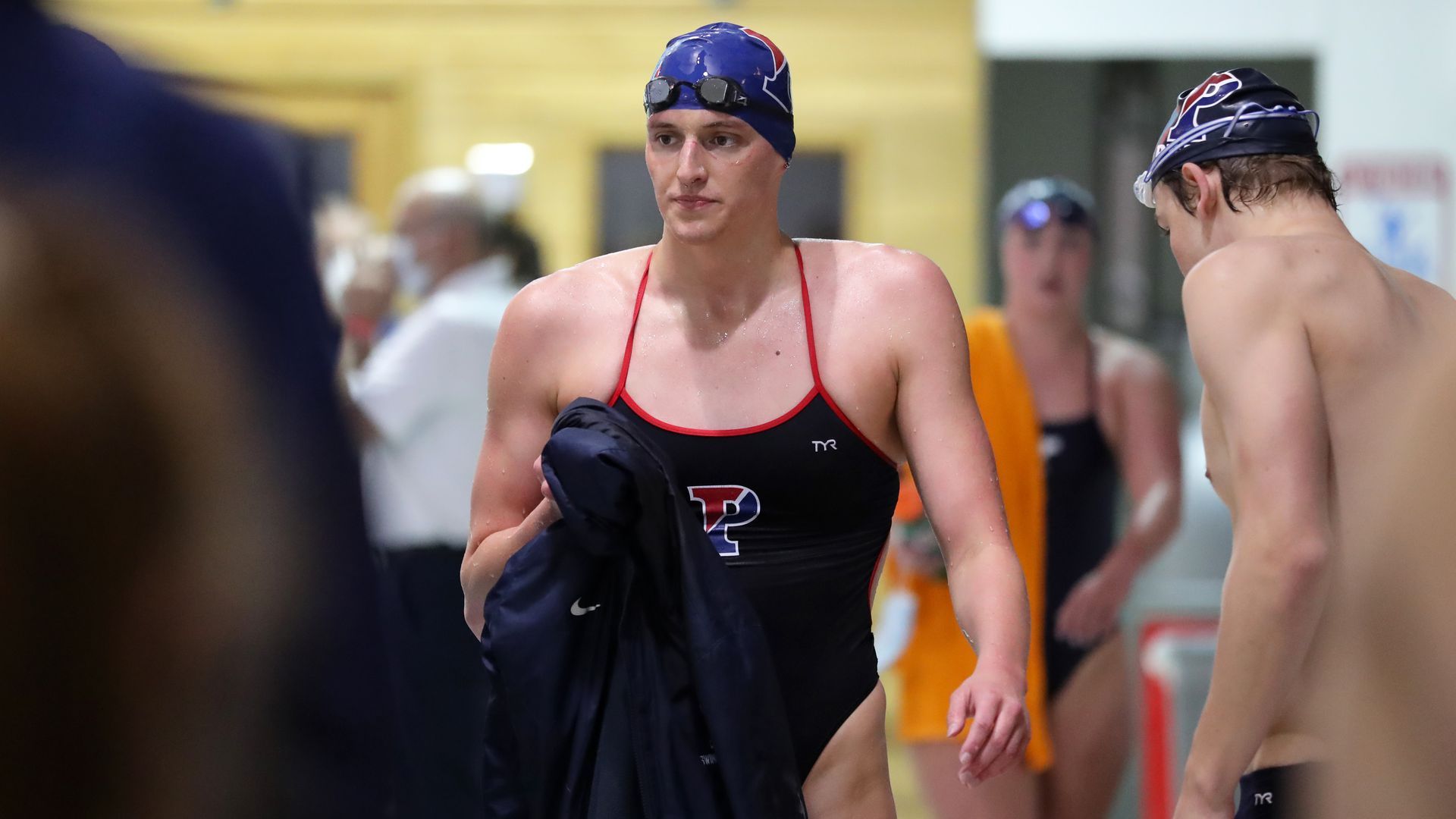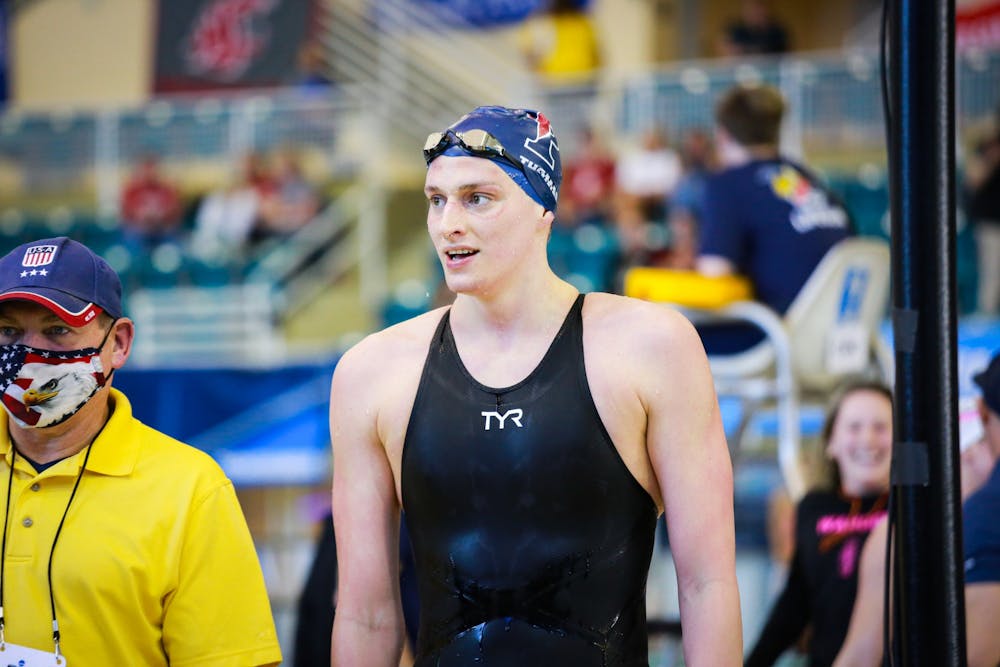Lia Thomas Leaves Competitive Swimming Permanently, Vows to Swim With Men Now

In a surprising and emotion-laden announcement, celebrated swimmer Lia Thomas has decided to withdraw from competitive swimming, citing an emotionally exhaustive journey and feelings of isolation. Thomas, a transgender athlete, has been at the center of numerous debates surrounding fairness, gender, and competition integrity in women’s sports.
In her statement, Lia expressed, “The waters have been turbulent, not due to the physical demands, but the constant battle to seek acceptance and fairness in a sport I adore. No athlete should feel isolated or singled out for their identity rather than recognized for their achievements.”
This decision comes after months of heated debates, petitions, and conversations concerning transgender athletes’ participation in women’s competitive sports. Her journey through the tumultuous waters of public scrutiny, policy debates, and ethical considerations has shone a light on the struggles transgender athletes face, both within and outside their chosen sporting arenas.
Thomas’s supporters argue that her departure from competitive swimming is a significant loss to the sport, underscoring the need for a nuanced, empathetic, and inclusive approach to athletes navigating their careers amidst complex identity debates. Her critics, meanwhile, have placed her achievements under a microscope, attributing her success to perceived physiological advantages.
As we navigate through the aftermath of Thomas’s withdrawal, the sports world is compelled to gaze into the reflective waters of ethical, biological, and social considerations surrounding transgender athletes. The question is, how will this moment shape the future lanes of competitive sports, and how will the conversations steer the experiences of future athletes entwined in similar narratives?
Lia Thomas’s departure from competitive swimming is not merely a personal decision but a significant moment that invites a collective pause and reflection upon the spaces, acceptance, and opportunities we offer to all athletes, regardless of their gender identity.

Beyond the personal turmoil and struggle that Thomas endured, her story highlights the global sporting community’s task to create an environment that is equitable and fair, maintaining the integrity of competition while being inclusive and considerate of the diverse identities of athletes. This extends not just to transgender athletes, but to all participants, from various backgrounds, identities, and experiences.
But the conundrum remains: how does one balance inclusivity and fairness in a domain that has historically been bifurcated along biological lines? Thomas’s experience underscores the necessity of revisiting sporting policies, particularly those that intersect with gender identity and biological variations. Her supporters and opponents alike may find common ground in recognizing that the policies of yesterday may no longer be fitting or comprehensive for the athletes of today and tomorrow.
As the dialogue propels into various sectors – from locker rooms to legislative chambers – the reflection upon the physiological, psychological, and ethical facets of this matter demands thorough, unbiased, and compassionate examination. The dialogue about transgender athletes, their biology, and their right to compete requires a tapestry of expertise, from endocrinologists to ethicists, and from athletes to administrators.
In the context of Lia Thomas, the discourse has ranged from emphatic support to pointed skepticism. Some posit that transgender women may have physiological advantages over cisgender women, while others underline the psychological and physical impact of transitioning, which can be both physically and emotionally exhaustive.
At the core of the discourse, beneath the scientific, ethical, and competitive dimensions, resides a fundamental human aspect that warrants priority: respect and empathy towards the lived experiences of all athletes, acknowledging their struggles, triumphs, and the sacrifices made in pursuit of excellence.

Thomas’s departure ignites crucial questions, requiring an intersectional approach that harmonizes inclusivity with fair competition. This includes considerations about hormone levels, physical attributes, and how these factors might influence competitive advantages or disadvantages in the sporting arena. The resolution of these queries is neither straightforward nor one-dimensional.
In this watershed moment, we are witnesses to an athlete who reached the pinnacle of success, yet found the journey marred by scrutiny, isolation, and exhaustive debate over her very right to participate. Thomas’s statement and subsequent withdrawal from competition provide a profound and poignant moment for reflection, far transcending the confines of sport.
The ramifications of Thomas’s withdrawal will invariably ripple through the sporting world, prompting athletes, governing bodies, and spectators alike to ponder how we can cultivate an environment that celebrates and honors all athletes for their dedication, prowess, and athletic achievements, unmarred by exclusion or bias.
In closing, the tapestry of sportsmanship is enriched by the varied threads of all those who weave into it, each bringing their unique textures, colors, and strengths. It’s intrinsic upon the collective sporting community to deliberate on how these threads can be woven together in a manner that upholds the dignity, respect, and equity of each strand. This instance, marked by Lia Thomas’s withdrawal, thus serves not as a conclusion, but an impetus for a deeper, inclusive, and holistic dialogue on the journey ahead in the realm of competitive sports.

